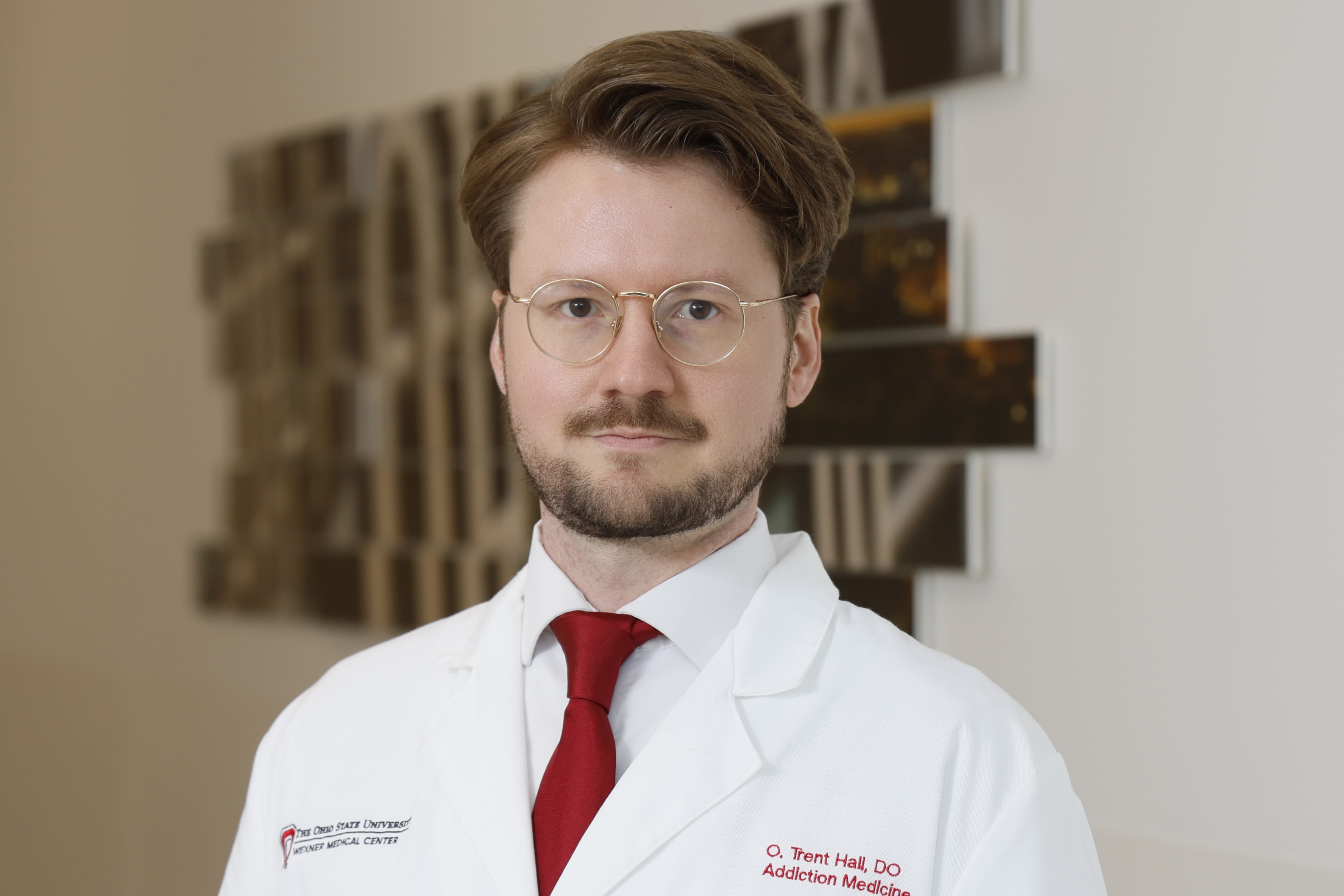August 26, 2024
COLUMBUS, Ohio – International Overdose Awareness Day is a worldwide campaign held each Aug. 31 that acknowledges the grief of family and friends left behind from those who have died from a drug overdose. This year’s campaign theme “Together we can” highlights the power of the community standing together to help end overdose.
However, a new survey of 1,000 Americans from The Ohio State University Wexner Medical Center and College of Medicine found more than three in four Americans say they would not be able to step in to treat an overdose.
“A recent Ohio State survey found that 77% of people are concerned that they wouldn't be able to respond if they saw someone having an overdose. And while, I'm not surprised about this result, I am deeply concerned because we know that the more of us who are prepared to save a life, the more lives we can save,” said Trent Hall, DO, an addiction medicine physician in Ohio State’s Department of Psychiatry and Behavioral Health.
 Drug overdose is the leading cause of accidental death in the United States, with an estimated 293 people dying from overdose daily, according to the National Center for Health Statistics.
Drug overdose is the leading cause of accidental death in the United States, with an estimated 293 people dying from overdose daily, according to the National Center for Health Statistics. Two FDA-approved medications are now available for anyone to use to help treat an overdose caused by opioids, such as fentanyl.
Both naloxone and nalmefene, which are sold under the brand names Narcan and Opvee, are nasal sprays that are simple to use to reverse the effects of an opioid overdose.
“Some people tell me that they're nervous or uncomfortable with the idea of using naloxone to save a life,” Hall said. “But there's nothing more terrifying than being in the moment, seeing someone who's having an overdose, and being powerless to help. Carrying naloxone empowers you to save a life in your community.”
Naloxone is available over the counter without a prescription, and many community-based programs also provide naloxone for free.
Opiod overdose happens in communities all over the country. The dangerously potent opioid fentanyl is often mixed into other substances or disguised as other kinds of pills, so people might not even know that they’ve had it until it’s too late.
“We know that we're losing more than 100,000 lives in the United States every year due to drug overdose. Naloxone has saved countless lives across this country.
We'll really never know how many lives have been saved because so many overdoses go unreported,” Hall said.
In the past 20 years, overdose death rates have increased fourfold, said Hall, who also conducts research at Ohio State on opioid use disorder.
“Our own research shows that when patients come here for treatment of opioid use disorder, the average patient has survived five accidental overdoses before coming here. And each one of those was a potentially fatal event,” Hall said.
“Imagine someone showing up for treatment who'd had five heart attacks before, or five strokes. This is every bit as dangerous, and naloxone is something that we can all use to save a life.”
When to administer naloxone
If someone is unconscious, not breathing and unable to respond when gently shaken, naloxone should be administered. If the person has passed out for another reason other than an opiod overdose, giving them naloxone will not cause any harm.
How to administer naloxone
• Check the person who might be having an overdose.
• Shout their name and shake their shoulder.
• If they are not breathing, open up naloxone nasal spray and spray into their nostrils.
• Call 911 to make sure they get attention from emergency medical services.
• Another does of naloxone may be needed if they don’t respond to the first dose after 2-3 minutes.
• Stay with them until emergency help arrives.
• Watch this video to learn how to administer naloxone.
“The availability to purchase naloxone without a prescription is helping to put this life-saving medication in the right hands at the right moments. Increasing awareness and training opportunities gives more people the confidence to step in and save a life,” Hall said.
###
Survey Methodology
This study was conducted on behalf of The Ohio State University Wexner Medical Center by SSRS on its Opinion Panel Omnibus platform. The SSRS Opinion Panel Omnibus is a national, twice-per-month, probability-based survey. Data collection was conducted from April 5-7, 2024 among a sample of 1,005 respondents. The survey was conducted via web (n=975) and telephone (n= 30) and administered in English. The margin of error for total respondents is +/- 3.4 percentage at the 95% confidence level. All SSRS Opinion Panel Omnibus data are weighted to represent the target population of U.S. adults ages 18 or older.
